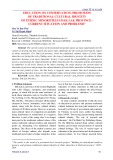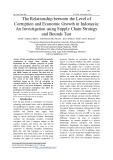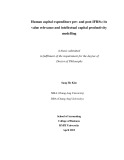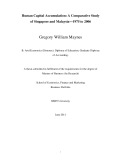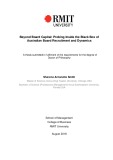
86
HNUE JOURNAL OF SCIENCE
Social Sciences 2024, Volume 69, Issue 4, pp. 86-94
This paper is available online at https://hnuejs.edu.vn/
DOI: 10.18173/2354-1067.2024-0070
IMPACT OF POVERTY REDUCTION POLICIES ON HUMAN CAPITAL
IN THE LIVELIHOOD ASSETS OF ETHNIC MINORITIES
IN DONG VAN DISTRICT, HA GIANG PROVINCE, VIETNAM
Vu Van Anh* and Nguyen Phuong Lien
Faculty of Geography, University of Education, Thai Nguyen University,
Thai Nguyen province, Vietnam
*Corresponding author: Vu Van Anh, e-mail: anhvv@tnue.edu.vn
Received October 31, 2024. Revised November 22, 2024. Accepted November 23, 2024.
Abstract. This study aims to analyze the impact of poverty reduction policies on livelihood
assets (human capital) of ethnic minorities in Dong Van district, Ha Giang province,
Vietnam. The research sample is from more than 400 survey questionnaires of ethnic
minority households in Dong Van district, Ha Giang province. Data were cleaned and
analyzed using SPSS 22.0 software. The research results show the positive and main impacts
of poverty reduction policies on the livelihood assets of ethnic minorities. Accordingly, in
the 5 groups of livelihood assets (human, natural, financial, physical, and social), the impact
of poverty reduction policies on human capital is the most important. The study provides
policymakers with valuable insights into the impact of poverty reduction policies on
livelihood assets of ethnic minorities. The study focuses on the northern border area of
Vietnam, in Dong Van district, Ha Giang, which is an area of strategic importance for
economic development and national security. The difference is that this regional study will
provide insights into the ethnic minority economic dynamics of a particular region that is
currently not widely studied.
Keywords: Poverty reduction policy, ethnic minorities, livelihoods, human capital, Dong
Van district.
1. Introduction
Achievements in poverty reduction in Vietnam over the past 20 years have been highly
appreciated by domestic and foreign studies. At the same time, Vietnam's efforts and
determination to reduce poverty are recognized through an increasingly diverse and
comprehensive policy system. These policies not only directly support the lives of poor groups
but also open up many opportunities to escape poverty based on development policies on
livelihoods, and access to and use of social services... Poverty reduction policies have a very
positive impact, so the scale of poverty reduction in Vietnam occurs in all regions, areas, and
population groups. Specifically, the rate of poor households nationwide has decreased, and the
scale of poverty reduction has been strong in economic regions, especially in areas where ethnic
minorities live, which have also achieved a relatively fast poverty reduction rate.
Research on poverty in ethnic minority areas is the subject of exploitation in many aspects,
such as the current situation and solutions for poverty reduction, poverty reduction policies for
ethnic minorities, assessment of the impact of poverty reduction policies on ethnic minorities,











